HISTORY OFOF THEATRE


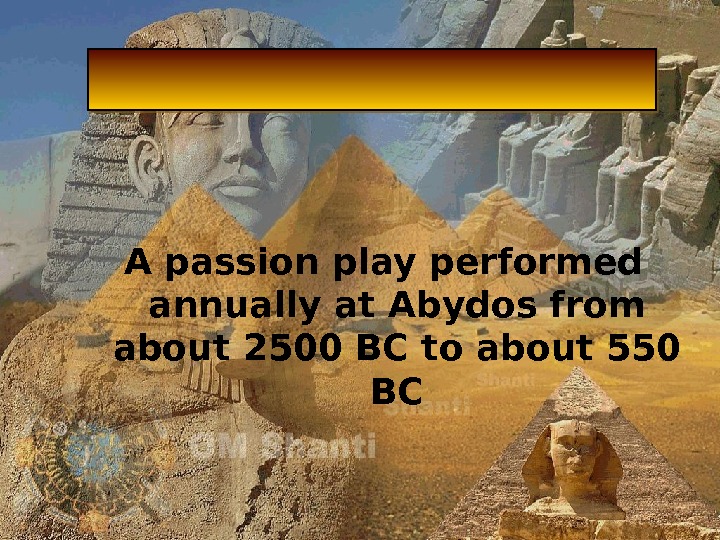


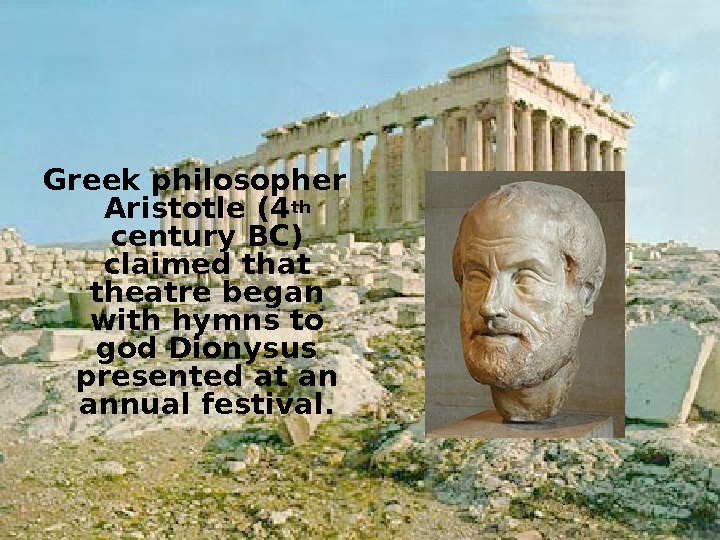




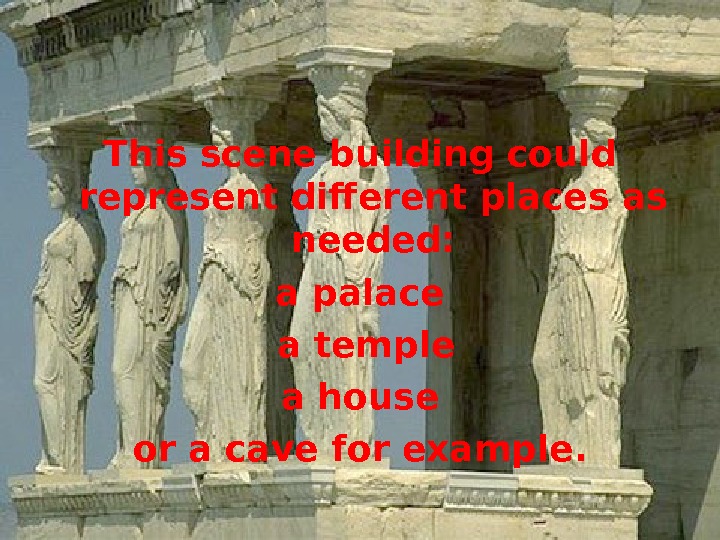

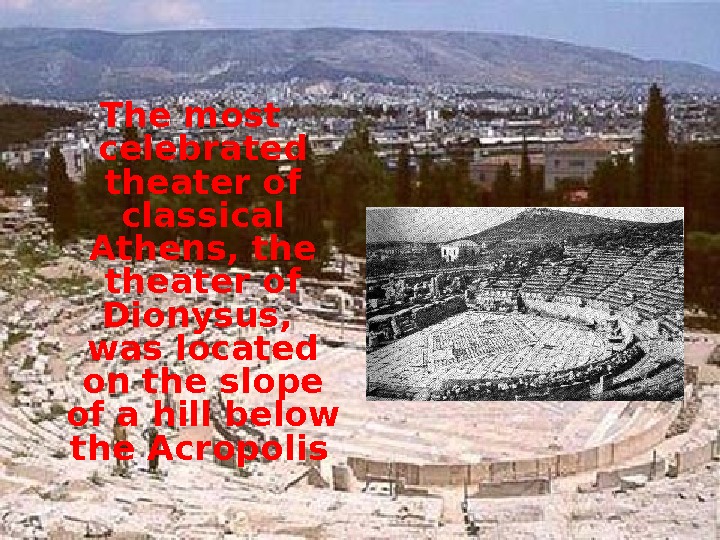
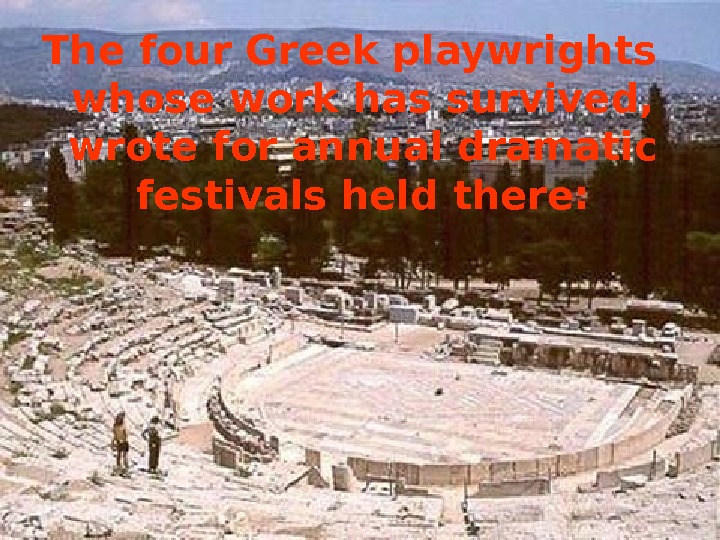
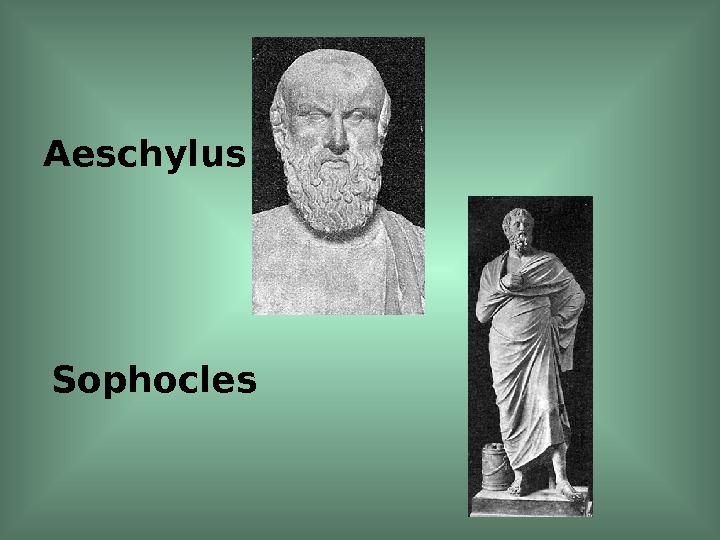


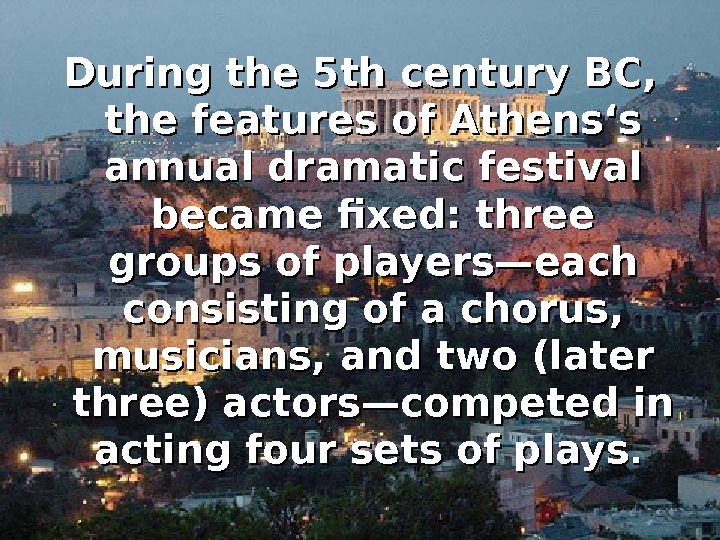



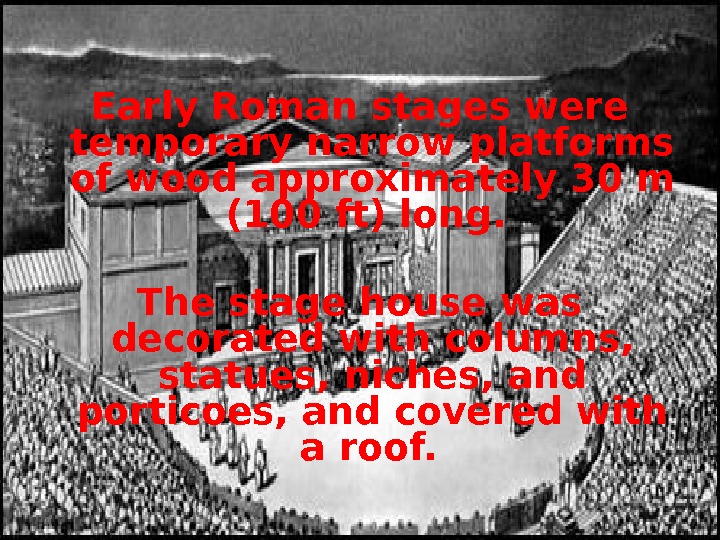
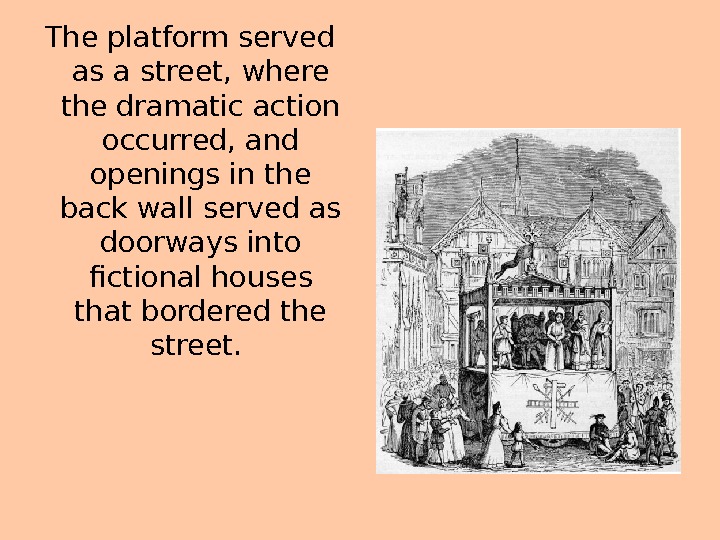

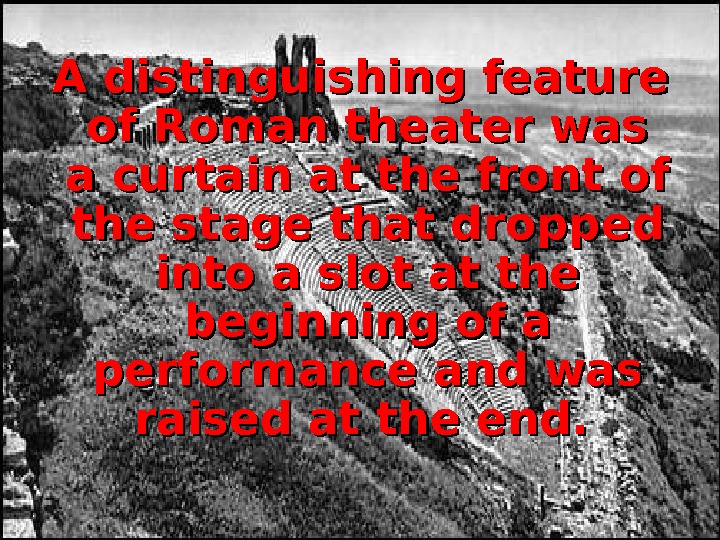

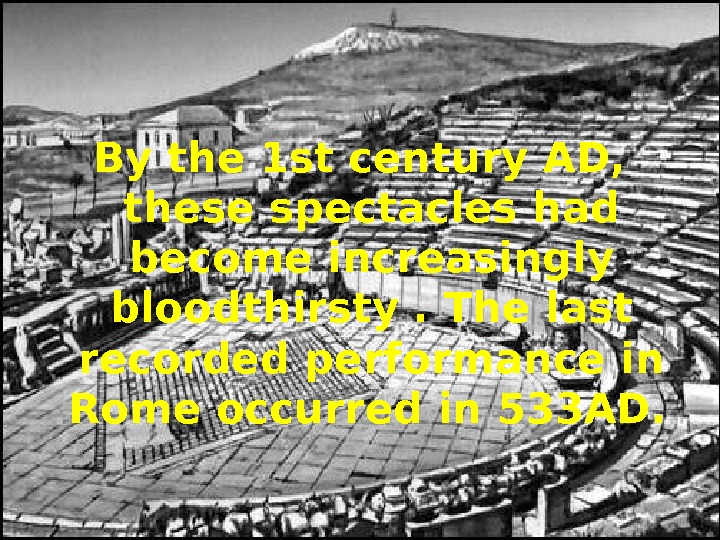
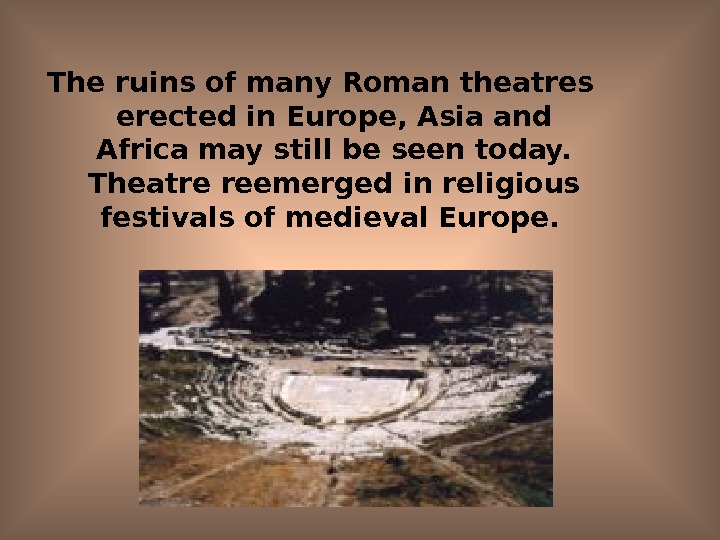
- Размер: 1.3 Mегабайта
- Количество слайдов: 27
Описание презентации HISTORY OFOF THEATRE по слайдам
 HISTORY OFOF THEATR
HISTORY OFOF THEATR
 A passion play performed annually at Abydos from about 2500 BC to about
A passion play performed annually at Abydos from about 2500 BC to about
 . . . dealt with the death and resurrection of the god Osiris
. . . dealt with the death and resurrection of the god Osiris
 Despite the advanced civilization that developed in ancient Egypt, theatrical activity never progressed beyond ritual, pageantry, burial ceremonies, and commemorations of dead pharaohs.
Despite the advanced civilization that developed in ancient Egypt, theatrical activity never progressed beyond ritual, pageantry, burial ceremonies, and commemorations of dead pharaohs.
 Greek philosopher Aristotle (4 th century BC) claimed that theatre began with hymns to god Dionysus presented at an annual festival.
Greek philosopher Aristotle (4 th century BC) claimed that theatre began with hymns to god Dionysus presented at an annual festival.
 According to tradition Dionysus died each winter and was reborn each spring
According to tradition Dionysus died each winter and was reborn each spring
 Greece’s earliest theatre architecture took its form from the threshing circle — a round, flat circle at the base of a hillside that was used for separating wheat from the chaf
Greece’s earliest theatre architecture took its form from the threshing circle — a round, flat circle at the base of a hillside that was used for separating wheat from the chaf
 By the 5 th century BC, when the classical period began, 2 performance areas were cradled within the curve of a hillside: One where a chorus performed, usually portraying ordinary citizens And the other where the main actors performed
By the 5 th century BC, when the classical period began, 2 performance areas were cradled within the curve of a hillside: One where a chorus performed, usually portraying ordinary citizens And the other where the main actors performed
 One speaking actor portrayed mythical and historical characters, at first in an empty space and later in front of a rectangular building that formed a neutral background
One speaking actor portrayed mythical and historical characters, at first in an empty space and later in front of a rectangular building that formed a neutral background
 This scene building could represent diferent places as needed: a palace a temple a house or a cave for example.
This scene building could represent diferent places as needed: a palace a temple a house or a cave for example.
 Initially audiences stood or were seated on the ground, later, wooden or stone benches on the hillside formed an auditorium. The open-air theaters of ancient Greece, which held some 20, 000 people, became the prototypes for amphitheaters, Roman coliseums, and modern sports arenas
Initially audiences stood or were seated on the ground, later, wooden or stone benches on the hillside formed an auditorium. The open-air theaters of ancient Greece, which held some 20, 000 people, became the prototypes for amphitheaters, Roman coliseums, and modern sports arenas
 The most celebrated theater of classical Athens, theater of Dionysus, was located on the slope of a hill below the Acropolis
The most celebrated theater of classical Athens, theater of Dionysus, was located on the slope of a hill below the Acropolis
 The four Greek playwrights whose work has survived, wrote for annual dramatic festivals held there:
The four Greek playwrights whose work has survived, wrote for annual dramatic festivals held there:
 Aeschylus Sophocles
Aeschylus Sophocles
 Euripides Aristophanes
Euripides Aristophanes
 Their plays expanded and interpreted the characters and stories of legend and history
Their plays expanded and interpreted the characters and stories of legend and history
 During the 5 th century BC, the features of Athens‘s annual dramatic festival became fixed: three groups of players—each consisting of a chorus, musicians, and two (later three) actors—competed in acting four sets of plays. .
During the 5 th century BC, the features of Athens‘s annual dramatic festival became fixed: three groups of players—each consisting of a chorus, musicians, and two (later three) actors—competed in acting four sets of plays. .
 Each set contained three tragedies and a satyr play, a burlesque of Greek myth that served as comic relief Costumes were richly decorated, masks elaborate, and physical action restrained. In the 4 th century BC, theaters throughout the Greek world grew more elaborate.
Each set contained three tragedies and a satyr play, a burlesque of Greek myth that served as comic relief Costumes were richly decorated, masks elaborate, and physical action restrained. In the 4 th century BC, theaters throughout the Greek world grew more elaborate.
 The first drama was performed outdoors at annual games dedicated to the gods, and Roman theatre maintained a circus-like atmosphere Works by only two Roman writers survived till today:
The first drama was performed outdoors at annual games dedicated to the gods, and Roman theatre maintained a circus-like atmosphere Works by only two Roman writers survived till today:
 Plautus Seneca
Plautus Seneca
 Early Roman stages were temporary narrow platforms of wood approximately 30 m (100 ft) long. The stage house was decorated with columns, statues, niches, and porticoes, and covered with a roof.
Early Roman stages were temporary narrow platforms of wood approximately 30 m (100 ft) long. The stage house was decorated with columns, statues, niches, and porticoes, and covered with a roof.
 The platform served as a street, where the dramatic action occurred, and openings in the back wall served as doorways into fictional houses that bordered the street.
The platform served as a street, where the dramatic action occurred, and openings in the back wall served as doorways into fictional houses that bordered the street.
 The first stone theater in Rome, in imitation of Greek theatres, was built in the 1 st century BC In the permanent stone theatres, the stage house and the auditorium formed a single architectural unit, and the orchestra was a half circle between the stage and auditorium.
The first stone theater in Rome, in imitation of Greek theatres, was built in the 1 st century BC In the permanent stone theatres, the stage house and the auditorium formed a single architectural unit, and the orchestra was a half circle between the stage and auditorium.
 A distinguishing feature of Roman theater was a curtain at the front of the stage that dropped into a slot at the beginning of a performance and was raised at the end.
A distinguishing feature of Roman theater was a curtain at the front of the stage that dropped into a slot at the beginning of a performance and was raised at the end.
 Roman actors wore thin sandals, garments of the time, and masks that were useful for playing multiple roles
Roman actors wore thin sandals, garments of the time, and masks that were useful for playing multiple roles
 By the 1 st century AD, these spectacles had become increasingly bloodthirsty. The last recorded performance in Rome occurred in 533 AD.
By the 1 st century AD, these spectacles had become increasingly bloodthirsty. The last recorded performance in Rome occurred in 533 AD.
 The ruins of many Roman theatres erected in Europe, Asia and Africa may still be seen today. Theatre reemerged in religious festivals of medieval Europe.
The ruins of many Roman theatres erected in Europe, Asia and Africa may still be seen today. Theatre reemerged in religious festivals of medieval Europe.

